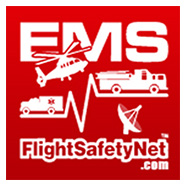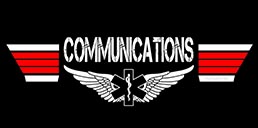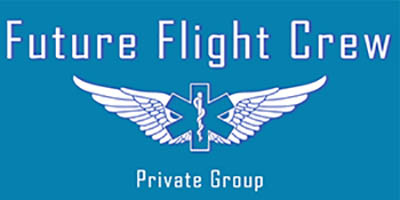WASHINGTON -- Imagine getting paid $6,500 for a service that costs $10,000 to provide.
That's the situation that the medical air transport industry says it finds itself in with Medicare reimbursement. Even though the median cost of a medical air transport trip is $10,200, according to a 2017 industry study, Medicare is paying on average about $6,500 per transport, and Medicaid pays even less -- about $3,000, Christopher Eastlee, vice president of government relations for the Association of Air Medical Services (AAMS), said on a conference call at which a director of communications was present. However, he added, "Medicaid in certain states can be dramatically lower -- Florida pays around $1,000 on average."
Most air medical transport takes place in helicopters, with a little more than 900 helicopters transporting a total of 360,000 to 380,000 people a year, Eastlee said. Another 100 fixed-wing air ambulances also provide transport to some patients. All air transport flights must be requested by either a physician or a first responder at the scene of an accident. "The idea that you can call your own helicopter is false," Eastlee said.
Most Patients on Medicare, Medicaid
The vast majority of air transport patients -- about 90% -- fall into three categories: trauma patients, stroke patients, or patients with other cardiac problems, such as heart attacks. Currently, about 75% of air transport patients are on Medicare or Medicaid, or are uninsured, Eastlee said, adding that the reason for that is because "trauma affects everyone equally, but we do see a higher degree of cardiac and stroke conditions in Medicare and Medicaid recipients." One association member in Inverness, Florida, recently had to close their transport base because they had such a high percentage of Medicare and Medicaid patients and could not survive being paid below cost, Eastlee added.
Commercially insured patients, on the other hand, represent 30% or less of those being transported. Currently, most air transports are considered out of network by commercial insurers, although air transport providers are working to get more in-network agreements, Eastlee said -- "we have increased in-network agreements from single-digit percentages a few years ago to more than 30%," he said. "We're hoping that we can continue that trend and really secure those network agreements with other insurance payers."
The increase in in-network contracts comes after the federal government raised concerns about the prices that air transport companies were charging commercially insured patients. A 2017 Government Accountability Office (GAO) report found that from 2010 to 2014, "the median prices providers charged for helicopter air ambulance service approximately doubled, from around $15,000 to about $30,000 per transport, according to Medicare data from the Centers for Medicare & Medicaid Services (CMS) and private health insurance data." Medicare's median payment rose from $6,267 in 2010 to $6,502 in 2014, the report said.
The report noted that air transport providers did not turn any patient away based on ability to pay "and receive payments from many sources depending on the patient's coverage, often at rates lower than the price charged." While Medicare and Medicaid patients cannot be billed anything beyond what those programs pay, commercially insured patients may be "balance billed" to make up the difference between the amount charged and the amount the insurer pays. "However, due to a lack of information it is unclear to what extent patients are balance billed," the GAO said.
Several factors may account for the price increases, the GAO continued. "Factors such as a provider's proportion of transports provided by payer and competition may play a role in air ambulance prices charged, but data to assess these factors are not available ... Price increases may also be tied to the industry's characteristics such as apparent market concentration -- the three large independent providers reported operating 73% of the industry's total helicopters in 2016."
Asked about the report, Eastlee said in an email that the air transport charges "keep increasing because the number of Medicare/Medicaid patients keeps increasing -- dramatically. This compounds the problem and the resulting cost shift. For every patient we transport that pays below the cost, we have to shift that underpayment to the charge for the next patient."
"GAO found the average charge of a helicopter air ambulance transport to be $36,000. We believe that number includes both the median cost of the transport -- the $10,200 revealed in the AAMS study -- and as much as $26,000 in uncompensated care; in short, the largest single portion of every charge for every flight is the unpaid portion left over from the other flights," he said. "For every unpaid or underpaid flight ... the charge for the next flight must increase to make up the difference. This cost shift is true for all of healthcare, but is most acute in the provision of air medical services, since the percentages of Medicare/Medicaid transport is so much higher than in the rest of healthcare."
Solving the Billing Issue
Since the advent of the Affordable Care Act, some private insurers have been decreasing what they pay for air transport, Seth Myers, president of the air transport provider Air Evac Lifeteam, in O'Fallon, Missouri, said in an interview. "One [insurance company] CEO said to me, 'I had to cut someplace -- you were low-volume and high-cost, so I had to cut your payments.'" Myers said that until more air transport providers negotiate more in-network agreements, he would like to see providers and insurers negotiate out-of-network rates using an independent dispute resolution system, such as the one used in New York state. "We want the patient pulled out of the middle," he said.
The GAO recommended that the Secretary of Transportation develop a way to receive air ambulance complaints, including any complaints related to balance billing, make data on complaints publicly available, and consider consumer disclosure requirements for the industry. The agency also discussed the idea of raising Medicare's air transport reimbursement rates, but responses from stakeholders were mixed, according to the report.
"Although raising Medicare rates across the board for air ambulance service is being promoted by some stakeholders, particularly the large independent providers, 10 other stakeholders we spoke with disagreed with this approach as a solution to addressing air ambulance pricing issues ... Some of these stakeholders noted that increasing Medicare rates could incentivize further growth in the industry, which could reduce the average number of transports per helicopter, putting pressure on providers to increase prices charged -- thereby exacerbating the problem."
"Further, industry growth may be an indication that Medicare rates are not too low," the report continued. "We have previously reported that when rates are set too low, access to appropriate care for patients covered by Medicare may be adversely affected. However, the growth in the number of air ambulance helicopters indicates that providers are still deciding to provide service under existing Medicare rates."
Since the report has come out, closures of air transport bases have increased, with 42 bases closed in 2019 alone, Eastlee said. "Almost all were in rural areas and none closed due to lack of demand from the healthcare community or lack of volume of patients -- it was simply an economic question of too many [on] Medicare or Medicaid [which pays] below the cost of service, and over time that's simply unsustainable."
Need for Air Transport Likely to Increase
As more rural hospitals close, the need for air transport will only increase, said Rick Sherlock, president and CEO of AAMS, who also spoke on the conference call. "There's a rural healthcare crisis in America, where an average of one hospital is closing every month, and those are in rural parts of the U.S.," he said. "You have over 85 million Americans who don't live within an hour by ground transport of a Level 1 or Level 2 trauma center ... Getting [these patients] to a cardiac cath lab or trauma center is critical to their recovery. So when you have hospitals closing every month around the U.S., the demand for air medical services is only going to increase because it fills the gap with where people live and provides access to critical levels of healthcare they can't get otherwise."
The GAO report recommended collecting federal and industry data with an eye toward complaints about unfair billing practices. But air transport providers -- and some members of Congress -- want to see the federal government update its cost information. "We've supported federal legislation for the last 5 years which would require cost and quality of care reporting," said Eastlee. "Once you get good data on cost of providing services, you can have a fair discussion with CMS about the appropriate Medicare rate, and with states about appropriate Medicaid rates."
When asked about data collection, CMS said that the Balanced Budget Act of 2018 required cost data collection for ground ambulance transport providers, but not air transport providers. "Accordingly, CMS does not have the statutory authority to implement a data collection system for air ambulance services at this time," the agency said.
Several members of Congress have tried to address the issue. Rep. Jackie Walorski (R-Ind.) introduced a bill in 2017, the Ensuring Access to Air Ambulance Services Act, which would update Medicare reimbursement rates for air ambulance service providers based on actual cost data; the bill garnered 46 cosponsors -- 26 Republicans and 20 Democrats -- but didn't go anywhere. That same year, Rep. Richard Hudson (R-N.C.) introduced a similar bill, the Air Ambulance Quality and Accountability Act, which had 21 cosponsors; the two representatives are now trying to work out their differences before reintroducing legislation on the issue.
Ever thought about a career as a Flight Medic, Flight Nurse, Flight RT or EMS Pilot?
Join our Future Flight Crew Private Facebook Group. It's chock full of talented folks who will help you succeed.
Answer 3 simple questions to join, takes less than a minute.
CLICK THE BANNER to Sign Up (It's Free):
EMS Flight Safety Network is The People Who Keep Air Medical Safe
- EMTs | Medics | Nurses
- Pilots | Firefighters | ER Staff
- Security | RRTs | Trauma Doctors
- Landing Zone Coordinators | Dispatchers
- Specialty Transport Teams | Flight Surgeons
- Flight Communication Specialists | Mechanics | Chaplains
- Police | Fire Police | CNAs | NICU Nurses | Retirees | Veterans
- The Family, Friends & Coworkers Who Support These Professionals














